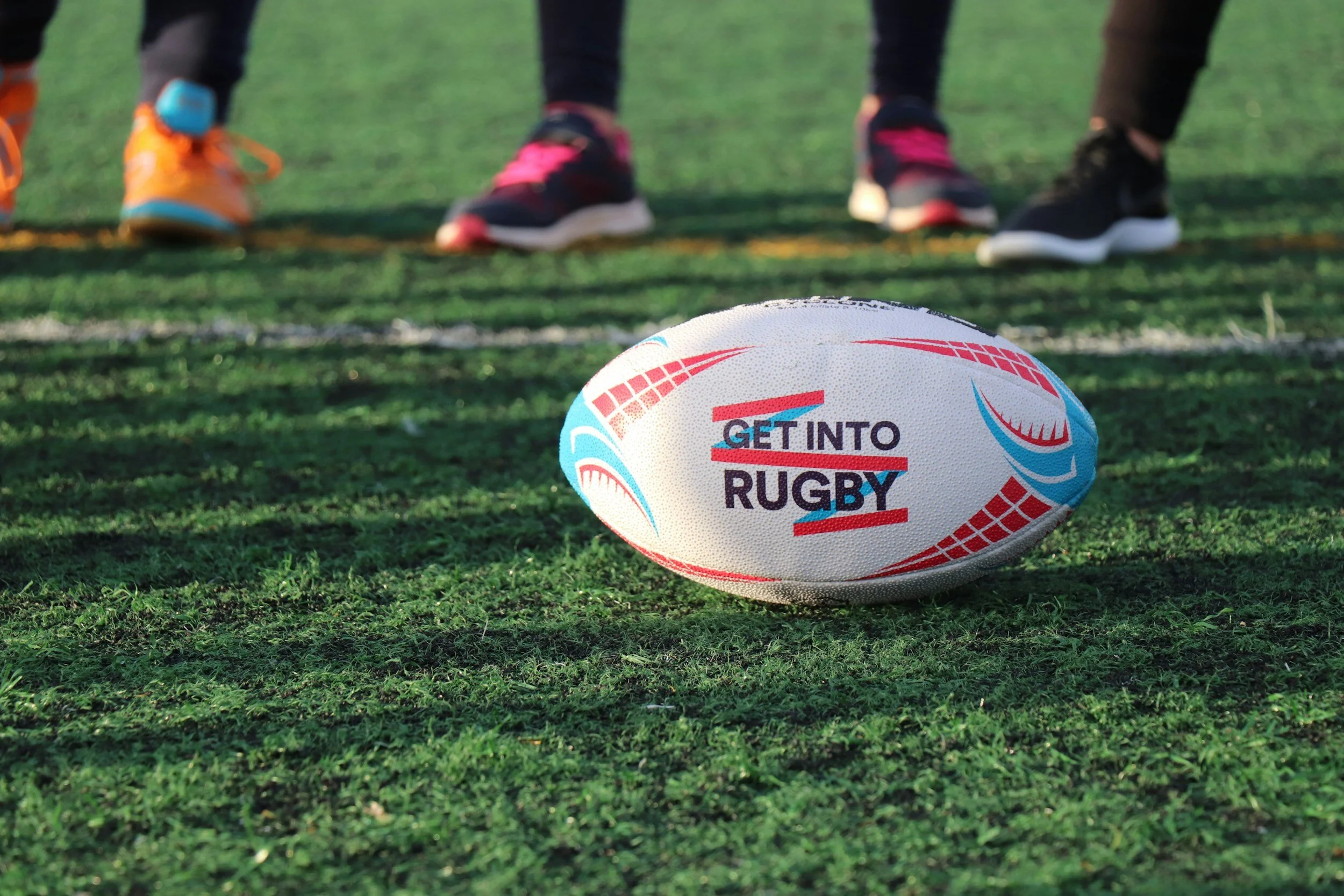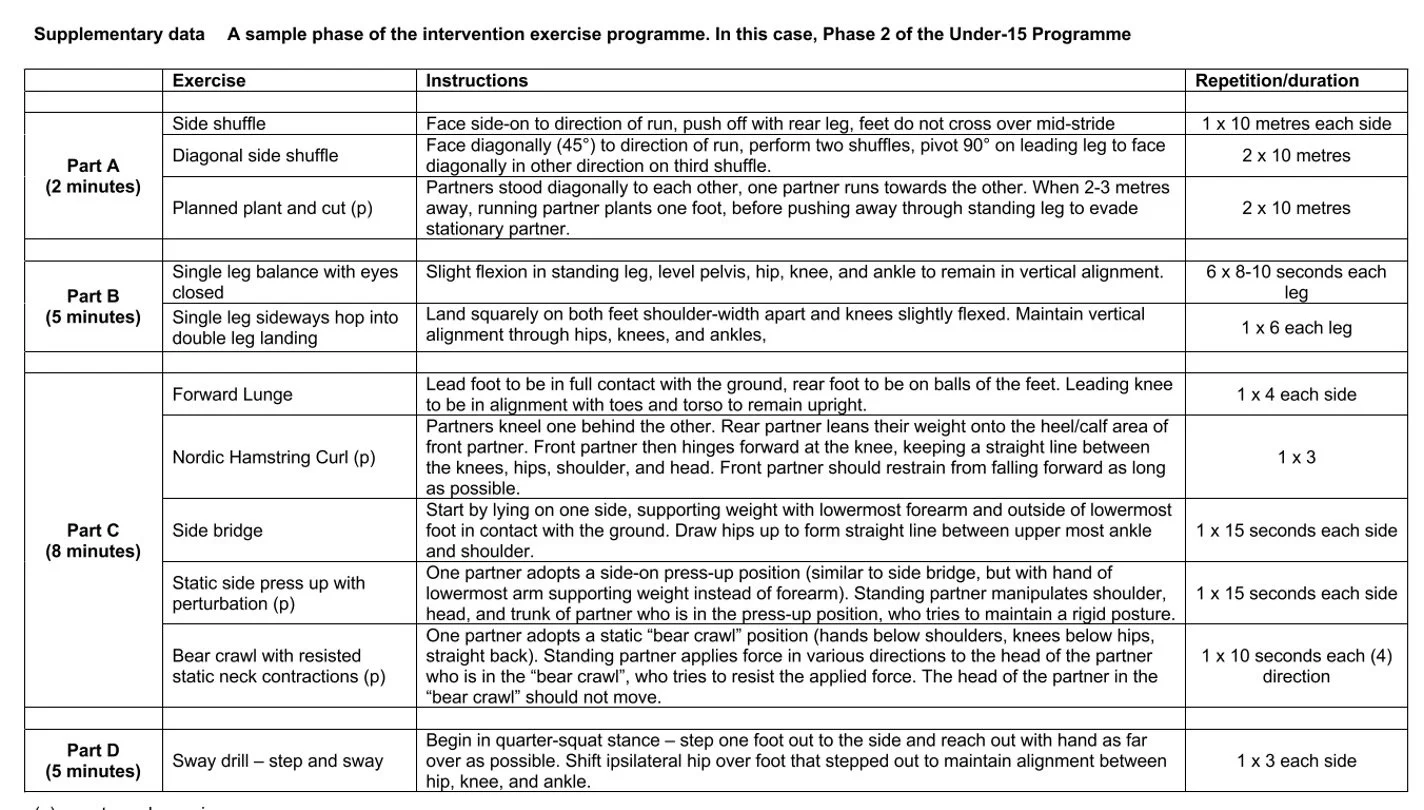Impact of Neuromuscular Training Warm-Up on Concussion Rates
Introduction:
Participation in sports offers numerous physical and mental health benefits, but it also comes with inherent risks, including the potential for concussions. Concussions, a type of traumatic brain injury, have gained increasing attention due to their prevalence and potential long-term consequences, particularly in contact sports like rugby. However, recent research suggests that incorporating neuromuscular training into warm-up routines can significantly decrease concussion rates among athletes. In this article, we'll delve into the importance of neuromuscular training warm-ups in reducing concussion rates, drawing insights from the study by Hislop et al. (2017) published in the British Journal of Sports Medicine.
Understanding Neuromuscular Training:
Neuromuscular training refers to exercises that target the coordination between the nervous system and muscles to improve strength, balance, stability, and proprioception (awareness of body position). These exercises focus on enhancing neuromuscular control, which plays a crucial role in injury prevention by reducing the risk of falls, collisions, and biomechanical abnormalities that can lead to injuries like concussions.
The Study by Hislop et al. (2017):
The study conducted by Hislop and colleagues aimed to evaluate the effectiveness of a pre-activity movement control exercise program in reducing musculoskeletal injuries and concussions among schoolboy rugby players. The researchers implemented a cluster-randomized controlled trial involving 40 schools and over 2,000 participants. The intervention group performed a 20-minute neuromuscular warm-up routine, including exercises targeting balance, strength, agility, and coordination, while the control group continued with their regular warm-up routine. A notable contrast between the intervention and control groups lay in their feedback approaches: the intervention group actively offered verbal cues to enhance task execution, whereas the control group did not utilize verbal feedback. Furthermore, divergent warm-up routines characterized these groups. The intervention group embraced a diverse regimen, encompassing balance/perturbation training, resistance training, plyometrics, and targeted rehearsals of sport-specific maneuvers. Conversely, the control group favored a more conventional approach, emphasizing running-based warm-ups, dynamic stretching, controlled wrestling, and mobility drills tailored to speed and direction changes.
Key Findings:
The study yielded promising results. Participants in the intervention group, who engaged in the neuromuscular warm-up routine, demonstrated a significant decrease in both musculoskeletal injuries and concussions compared to the control group. Notably, the intervention group experienced a remarkable 72% reduction in overall match injury incidence, with significant decreases observed in concussions and upper extremity injuries. These findings underscore the potential protective benefits of neuromuscular training, mitigating risks for both brain and musculoskeletal injuries.
“72% reduction in overall match injury and contact-related injury ”
Example Intervention Warm-up Routine:
Hislop, M. D., et. al. 2017
Implications for Concussion Prevention:
The findings of this study have important implications for concussion prevention in sports. Incorporating neuromuscular training warm-up routines into pre-activity preparations can enhance athletes' neuromuscular control, proprioception, and overall biomechanical efficiency, thereby reducing the likelihood of sustaining concussions during gameplay. By improving athletes' ability to maintain balance, absorb impact, and react to sudden changes in direction, neuromuscular training serves as a valuable tool in mitigating concussion risk.
Practical Applications:
Athletes, coaches, and sports organizations can integrate neuromuscular training warm-up protocols into their regular practice sessions and pre-game routines. These protocols should include a combination of exercises targeting dynamic stability, core strength, plyometrics, and agility drills tailored to the specific demands of the sport. Consistent implementation of neuromuscular training not only reduces the risk of concussions but also enhances overall athletic performance and resilience to musculoskeletal injury.
Conclusion:
Incorporating neuromuscular training warm-up routines represents a proactive and evidence-based approach to decreasing concussion rates in sports. The study by Hislop et al. (2017) underscores the effectiveness of such interventions in reducing both musculoskeletal injuries and concussions among schoolboy rugby players. By prioritizing neuromuscular training as part of pre-activity preparations, athletes can enhance their neuromuscular control and reduce the risk of sustaining concussions, thereby promoting safer and more sustainable participation in sports.
References:
• Hislop, M. D., Stokes, K. A., Williams, S., McKay, C. D., England, M. E., Kemp, S. P. T., & Trewartha, G. (2017). Reducing musculoskeletal injury and concussion risk in schoolboy rugby players with a pre-activity movement control exercise programme: A cluster randomised controlled trial. British Journal of Sports Medicine, 51(15). https://doi.org/10.1136/bjsports-2016-097434
• Patricios, J. S., Schneider, K. J., Dvorak, J., Ahmed, O. H., Blauwet, C., Cantu, R. C., Davis, G. A., Echemendia, R. J., Makdissi, M., McNamee, M., Broglio, S., Emery, C. A., Feddermann-Demont, N., Fuller, G. W., Giza, C. C., Guskiewicz, K. M., Hainline, B., Iverson, G. L., Kutcher, J. S., … Meeuwisse, W. (2023). Consensus statement on concussion in sport: the 6th International Conference on Concussion in Sport-Amsterdam, October 2022. British Journal of Sports Medicine, 57(11), 695–711. https://doi.org/10.1136/bjsports-2023-106898


